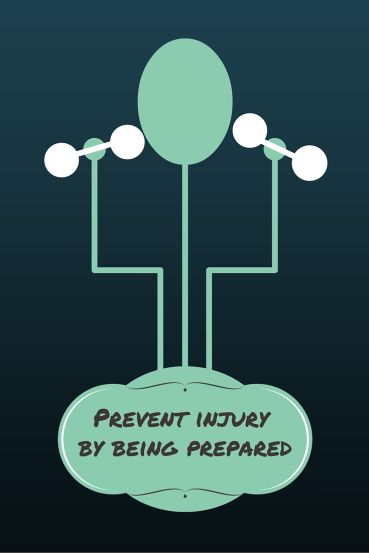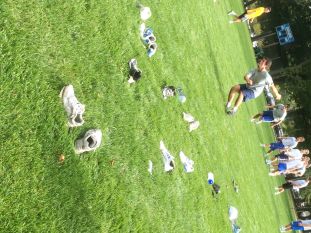
Building up strength is just as important to athletic performance as practicing the sport.
Outside of regular sports practice, athletes develop overall fitness through the leadership of Dustin Malandra, the strength and conditioning trainer.
“Strength and conditioning is more challenging [than other fitness training fields] to me because there’s a lot more depth to program design,” Malandra said. “Having to mingle or meld explosiveness, mobility, power, strength and mass all into one, it’s challenging to program, but fun at the same time.”
“I like being able to make someone bigger, faster and stronger,” Malandra said. “Also staying healthy and injury free is a big aspect of [strength and conditioning training].”
A major point of the training is to improve the way that athletes move in tight spaces, commonly called explosion, and there are tests such as a jump test that help trainers like Malandra judge an athlete’s progress.
“On the field some of the differences we see are increased explosions, so they’re faster from that dead stop position, better change of direction, so deceleration into quick acceleration in an opposite plain or direction [improves],” Malandra said. “The biggest thing we try to change is speed.”
With a variety of different teams, Malandra stays on top of training many different athletes to strengthen themselves so that they can perform better on the field.
“Throughout a regular day I work with anywhere from four to eleven groups. It depends on the team and how long they’ve been training, the season we’re in, and each team gets an hour [per session],” Malandra said.
The nature of strength and conditioning training makes it hard for athletes to stay on top of the program. Class schedules and other obligations make Malandra’s scheduling with teams difficult, but breaking teams into smaller groups also helps him to focus on individual development of players more easily.
“In this field you have to come consistently to see results,” Malandra said.
All athletes do not always come into this training used to lifting, but Malandra said that being able to see people struggle with the program and after a few weeks become to enjoy it is really amazing.
“I like seeing that change in athleticism,” Malandra said.
The NSCA (National Strength and Conditioning Association) and the CSCCA (Collegiate Strength and Conditioning Coaches Association) are the two ways that allow testing options for those interested in working in the field as a coach. In the case of Malandra, he started in Kinesiology before working his way through the certification process.

“Having a Kinesiology degree, you learn a lot of the basic anatomy, the biomechanics, that are prerequisites to strength and conditioning certification,” Malandra said. “The way that the CSCS works is that you have to have a bachelor’s degree, and I had four years of experience in the field where I took the test.”
“Lots of people think that, coming out of high school they know everything. They want to be bodybuilders, power lifters or they want to look good but they don’t necessarily understand what goes into athletics. It’s a different animal,” Malandra said.
“Continuing education is actually required to keep your certifications,” Malandra said.
The field is constantly growing and changing as the NSCA and CSCCA websites prove through the studies that they publish.
“I think thing that is really coming to fruition is posture and breathing mechanics,” Malandra said.
“The injury prevention aspect is luckily coming to the forefront more. People think it’s a lot of just get big and lift heavy weights, but if you can’t stay on the field or court, then it doesn’t matter how strong you are.”
At the end of the day, working to build each athlete’s personal strength takes a lot of work.
“You kinda have to experiment to see what’s going to work,” Malandra said.



